Epigenetic control of IL-23 expression in keratinocytes is important for chronic skin inflammation
- PMID: 29650963
- PMCID: PMC5897363
- DOI: 10.1038/s41467-018-03704-z
Epigenetic control of IL-23 expression in keratinocytes is important for chronic skin inflammation
Abstract
The chronic skin inflammation psoriasis is crucially dependent on the IL-23/IL-17 cytokine axis. Although IL-23 is expressed by psoriatic keratinocytes and immune cells, only the immune cell-derived IL-23 is believed to be disease relevant. Here we use a genetic mouse model to show that keratinocyte-produced IL-23 is sufficient to cause a chronic skin inflammation with an IL-17 profile. Furthermore, we reveal a cell-autonomous nuclear function for the actin polymerizing molecule N-WASP, which controls IL-23 expression in keratinocytes by regulating the degradation of the histone methyltransferases G9a and GLP, and H3K9 dimethylation of the IL-23 promoter. This mechanism mediates the induction of IL-23 by TNF, a known inducer of IL-23 in psoriasis. Finally, in keratinocytes of psoriatic lesions a decrease in H3K9 dimethylation correlates with increased IL-23 expression, suggesting relevance for disease. Taken together, our data describe a molecular pathway where epigenetic regulation of keratinocytes can contribute to chronic skin inflammation.
Conflict of interest statement
The authors declare no competing interests.
Figures
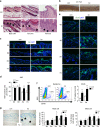


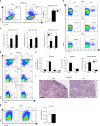
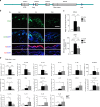

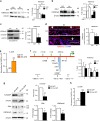
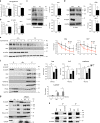

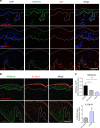
Similar articles
-
Gain-of-Function Mutation of Card14 Leads to Spontaneous Psoriasis-like Skin Inflammation through Enhanced Keratinocyte Response to IL-17A.Immunity. 2018 Jul 17;49(1):66-79.e5. doi: 10.1016/j.immuni.2018.05.012. Epub 2018 Jul 3. Immunity. 2018. PMID: 29980436
-
The Keratinocyte Transcriptome in Psoriasis: Pathways Related to Immune Responses, Cell Cycle and Keratinization.Acta Derm Venereol. 2019 Feb 1;99(2):196-205. doi: 10.2340/00015555-3066. Acta Derm Venereol. 2019. PMID: 30320872
-
Keratinocytes contribute intrinsically to psoriasis upon loss of Tnip1 function.Proc Natl Acad Sci U S A. 2016 Oct 11;113(41):E6162-E6171. doi: 10.1073/pnas.1606996113. Epub 2016 Sep 26. Proc Natl Acad Sci U S A. 2016. PMID: 27671649 Free PMC article.
-
Purinergic Signaling and Inflammasome Activation in Psoriasis Pathogenesis.Int J Mol Sci. 2021 Aug 31;22(17):9449. doi: 10.3390/ijms22179449. Int J Mol Sci. 2021. PMID: 34502368 Free PMC article. Review.
-
Interleukin-17 alters the biology of many cell types involved in the genesis of psoriasis, systemic inflammation and associated comorbidities.Exp Dermatol. 2018 Feb;27(2):115-123. doi: 10.1111/exd.13467. Epub 2017 Dec 29. Exp Dermatol. 2018. PMID: 29152791 Review.
Cited by
-
Epigenetic Dysregulation in Autoimmune and Inflammatory Skin Diseases.Clin Rev Allergy Immunol. 2022 Dec;63(3):447-471. doi: 10.1007/s12016-022-08956-8. Epub 2022 Nov 8. Clin Rev Allergy Immunol. 2022. PMID: 36346551 Review.
-
Functional Genomics and Insights into the Pathogenesis and Treatment of Psoriasis.Biomolecules. 2024 May 3;14(5):548. doi: 10.3390/biom14050548. Biomolecules. 2024. PMID: 38785955 Free PMC article. Review.
-
Role of Epigenetics in the Regulation of Immune Functions of the Skin.J Invest Dermatol. 2021 May;141(5):1157-1166. doi: 10.1016/j.jid.2020.10.012. Epub 2020 Nov 27. J Invest Dermatol. 2021. PMID: 33256976 Free PMC article. Review.
-
Histone Modifications and DNA Methylation in Psoriasis: A Cellular Perspective.Clin Rev Allergy Immunol. 2025 Jan 27;68(1):6. doi: 10.1007/s12016-024-09014-1. Clin Rev Allergy Immunol. 2025. PMID: 39871086 Review.
-
Paeoniflorin suppresses allergic and inflammatory responses by promoting autophagy in rats with urticaria.Exp Ther Med. 2021 Jun;21(6):590. doi: 10.3892/etm.2021.10022. Epub 2021 Apr 8. Exp Ther Med. 2021. PMID: 33884028 Free PMC article.
References
Publication types
MeSH terms
Substances
LinkOut - more resources
Full Text Sources
Other Literature Sources
Medical
Molecular Biology Databases

